A Long Weekend in the South of Spain: a Trip to Sevilla, Granada, and Cordoba
A Long Weekend in the South of Spain: a Trip to Sevilla, Granada, and Cordoba
Part of my program with LIU Global is extended trips, and this semester includes several trips around Spain. If you’ve kept up with my travels this semester, you’ve seen that I’ve participated in the Camino de Santiago and traveled to Barcelona with my school. This week, we traveled to beautiful Andalusia, the southern region of Spain, where we visited the cities of Sevilla, Granada, and Cordoba. Read further for a breakdown of our visits to each city, and why I fell in love with southern Spain.
Sevilla
Sevilla is truly magnificent. I enjoy living in the Madrid area, but there’s a different kind of vibrancy and vivaciousness that Sevilla has that draws me in more than the capital. The images that may arise when you think of Spain: flamenco, paella, etc., are all present in Sevilla, and these elements combined with Islamic influence make for an interesting and beautiful city.
When we first got there on the train, we checked in to our hostel and headed to the Cathedral of Sevilla. This cathedral is known for its distinctive tower, called ‘La Giralda,’ that was built under a lot of Islamic influence.
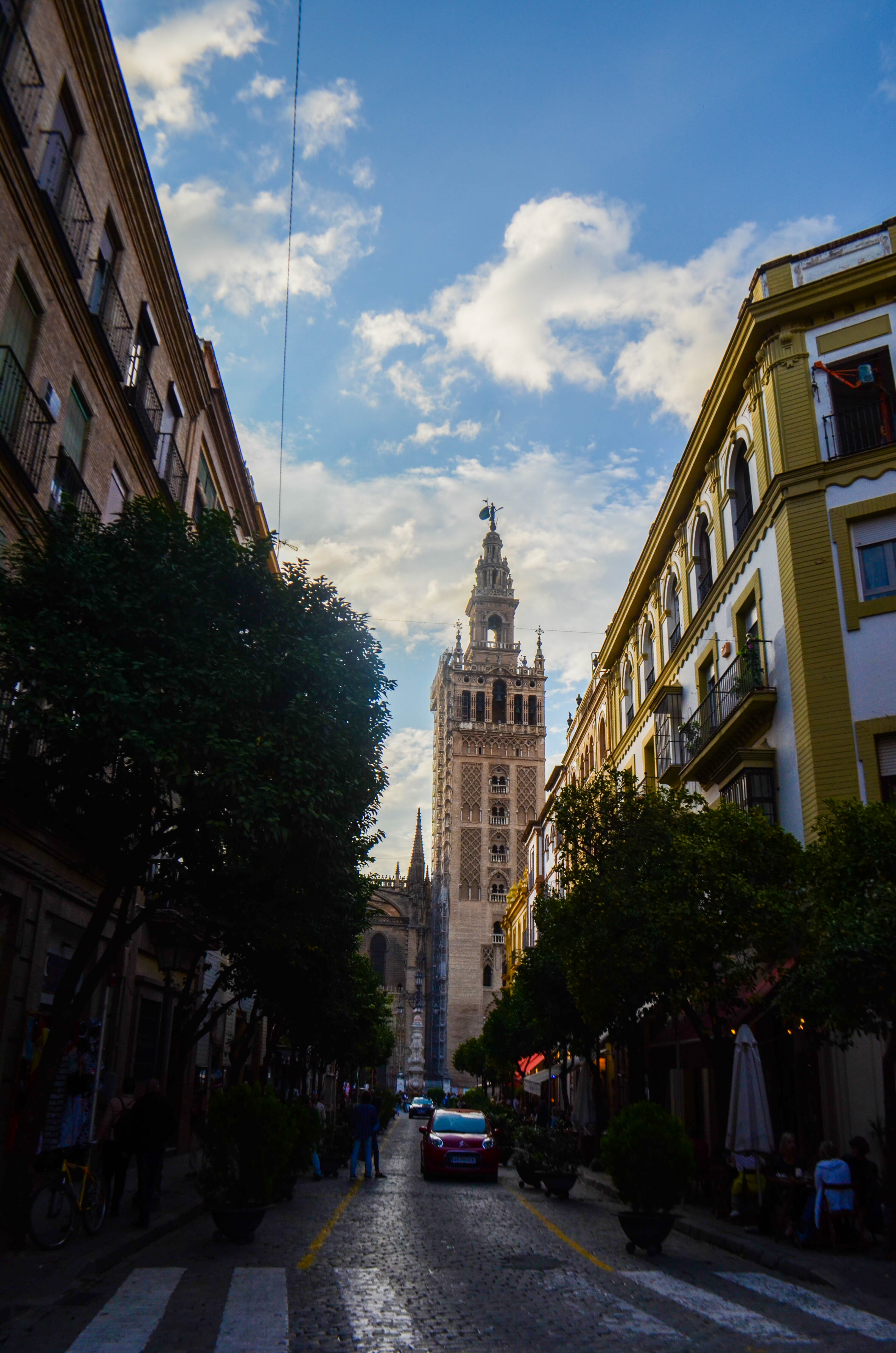
A view of ‘La Giralda.’
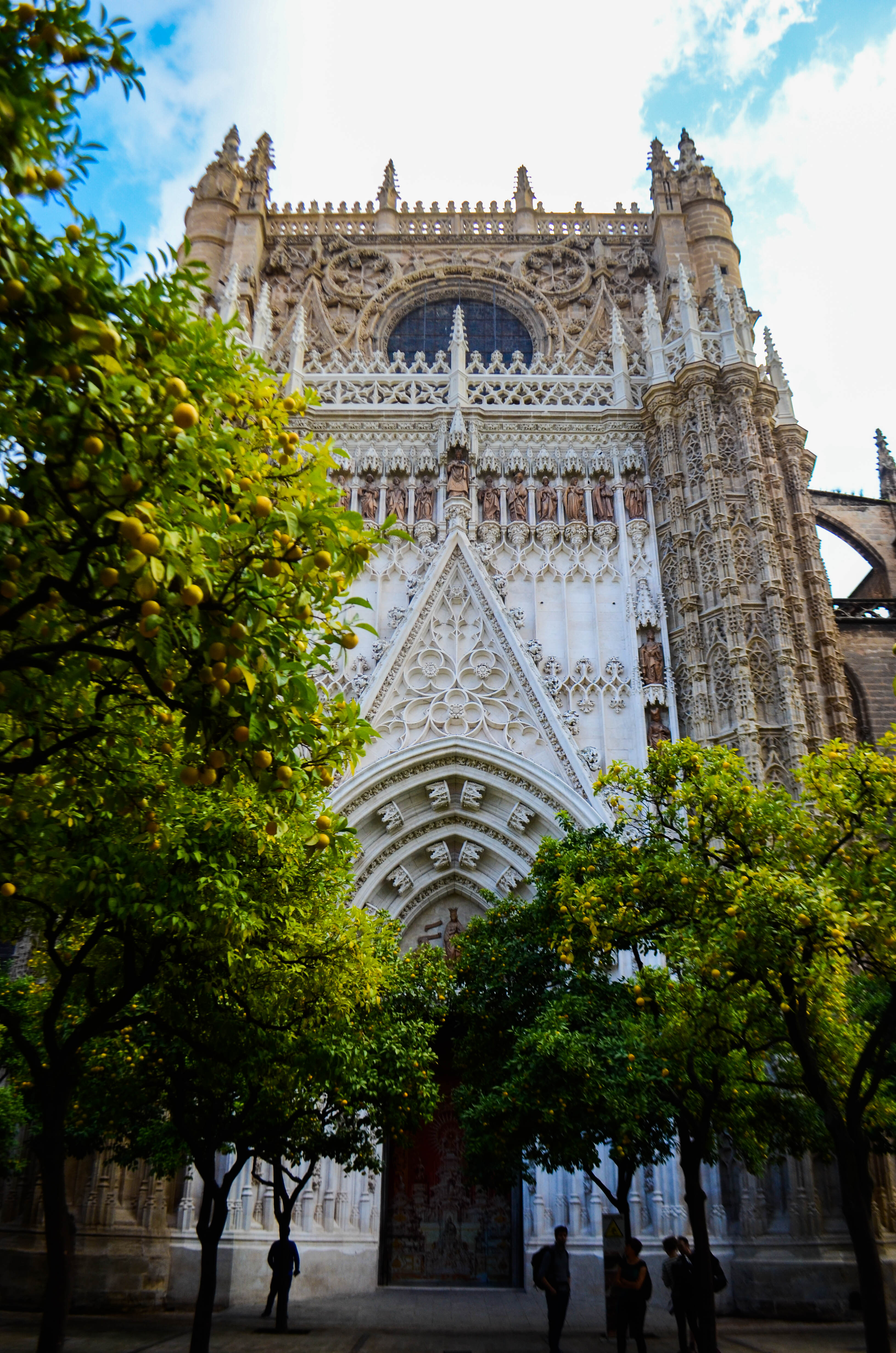
A view of the outside of the church from a courtyard filled with orange trees.
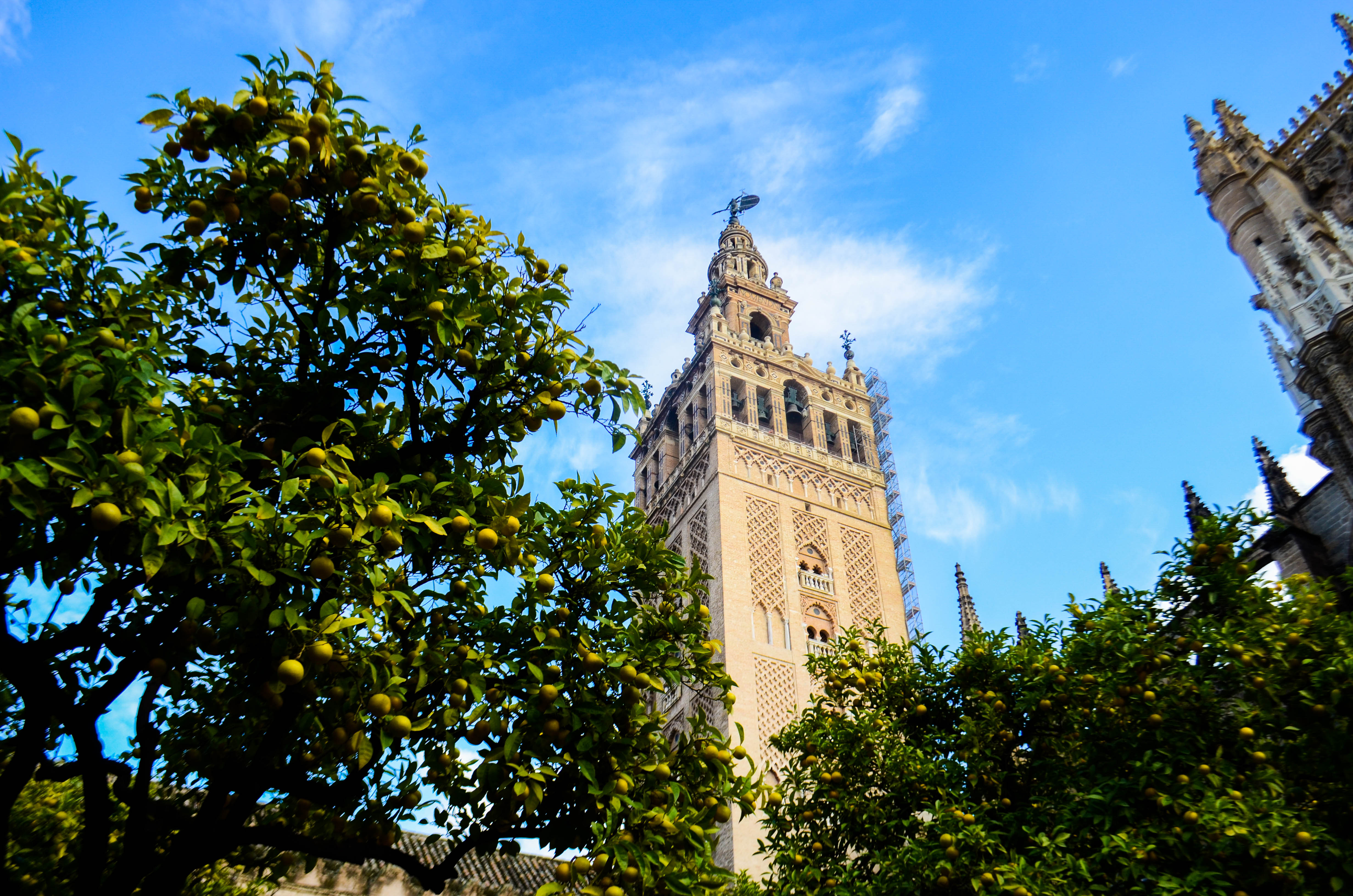
‘La Giralda’
Inside the church, there are carved ceilings that reminded me of the bottom of octopi, grand and golden centerpieces displaying figures from the Bible, and, oddly enough, Christopher Columbus’ body. The infamous explorer was very important to the expansion of the Spanish empire, and he spent a great deal of time in Sevilla, which was a major port city, so his body (or what they think is his body) was moved here from Cuba after Cuba gained its independence.
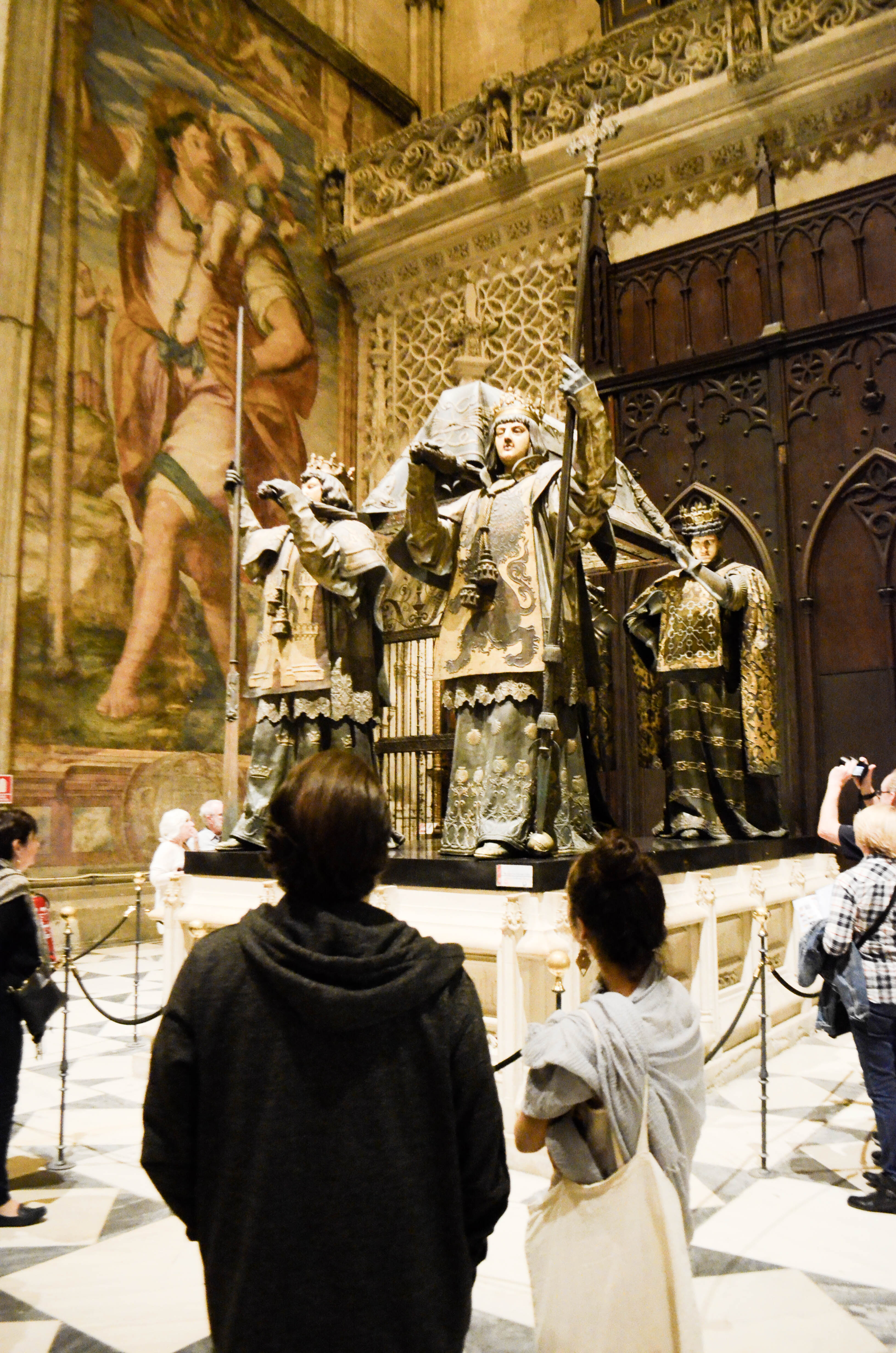
Columbus’ body rests in this statue, looming above visitors.
The Cathedral is beautiful and is a must-see on a visit to Sevilla. However, in my opinion, it does not hold a candle to the beauty of the Plaza de España. Over 2 days in Sevilla, I found myself in this beautiful plaza 3 times. I wandered there on my own one day, taking a nice 20 minute walk from the hostel to the plaza, and I loved it so much that I dragged different groups of classmates there on 2 more occasions.
The plaza is stunning with its tall towers and exquisite tile work representing the different cities and former kingdoms of Spain. My jaw literally dropped when I entered the square for the first time.
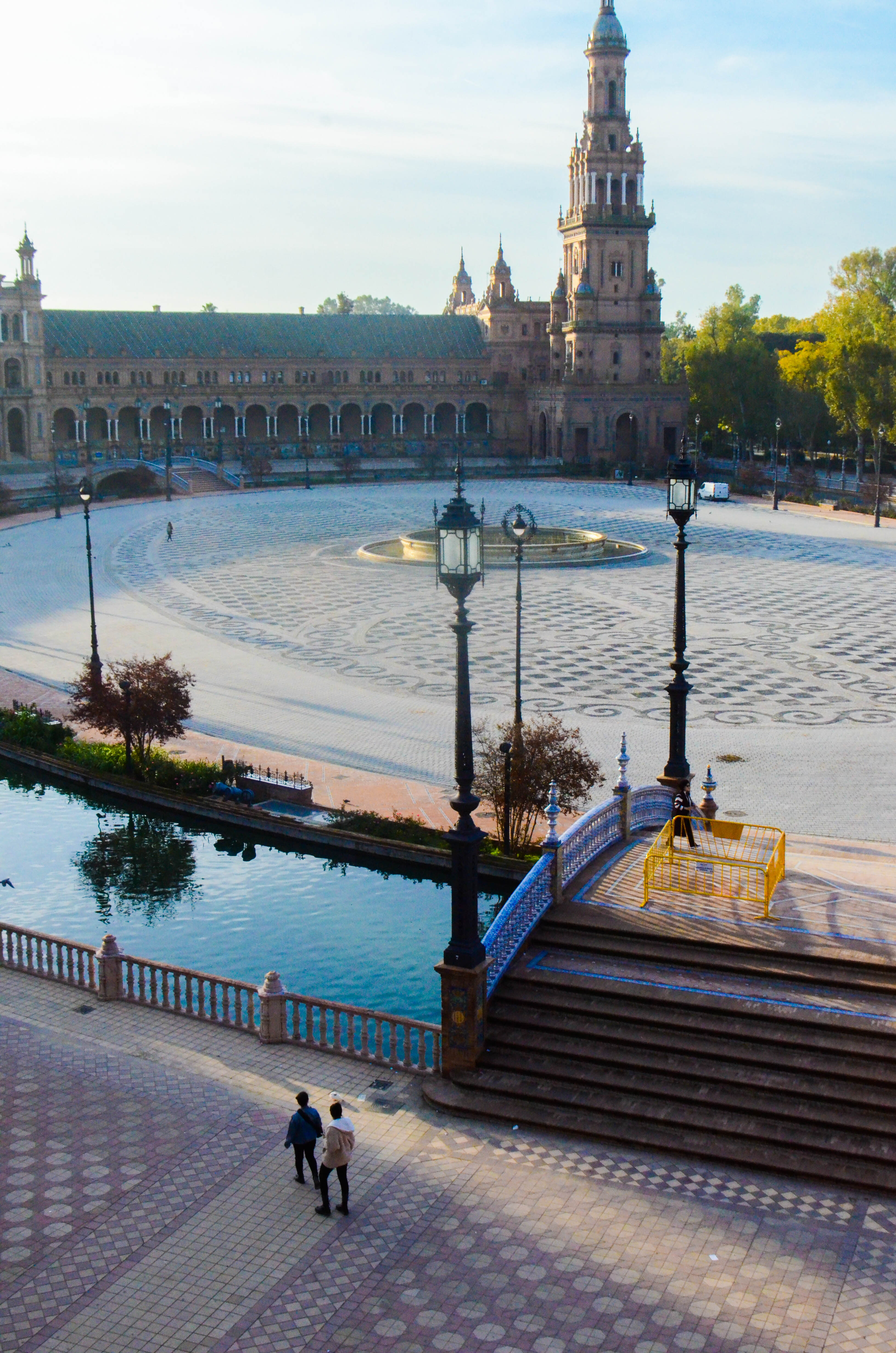
I could spend forever there, just wandering through the paths, up and over bridges, and up into the towers, and watching tourists go by. The plaza is beautiful to wander around, but the city itself is also just amazing for exploring on foot. Near the cathedral, it’s easy to get lost in quaint back alleys teeming with plants and bright-colored walls.
Another main attraction of the city is Las Setas, a weird, large structure that you can go up into and walk along for 3 Euros. I’m really not sure what its purpose is besides hosting events and attracting visitors, but it does look pretty cool, and there’s a great view of the city from the top.
- Las Setas in Sevilla
- Kendall walking along Las Setas in Sevilla
- The top of Las Setas in Sevilla
- The view of Sevilla from Las Setas
Also while in Sevilla, we saw a Flamenco show at the Museum of Flamenco. I don’t have any photos because they weren’t permitted during the show, but the dancers were truly mesmerizing and I would definitely recommend seeing a flamenco show here if you make it to Sevilla.
Granada
The next stop on our journey was Granada. Due to some train lines being worked on, it took us 5 hours on two buses and a train to get to Granada, but it was well worth it. Granada is comprised of winding hills and charming buildings surrounding the Alhambra. When we first arrived, we dropped off our stuff at the hostel and set off for the Mirador San Nicolas. This lookout is up a pretty steep hill, but the beautiful view of the Alhambra and the city is well worth some huffing and puffing. Even better, we made it up there in time for sunset, and watched the sky turn beautiful colors over the city.
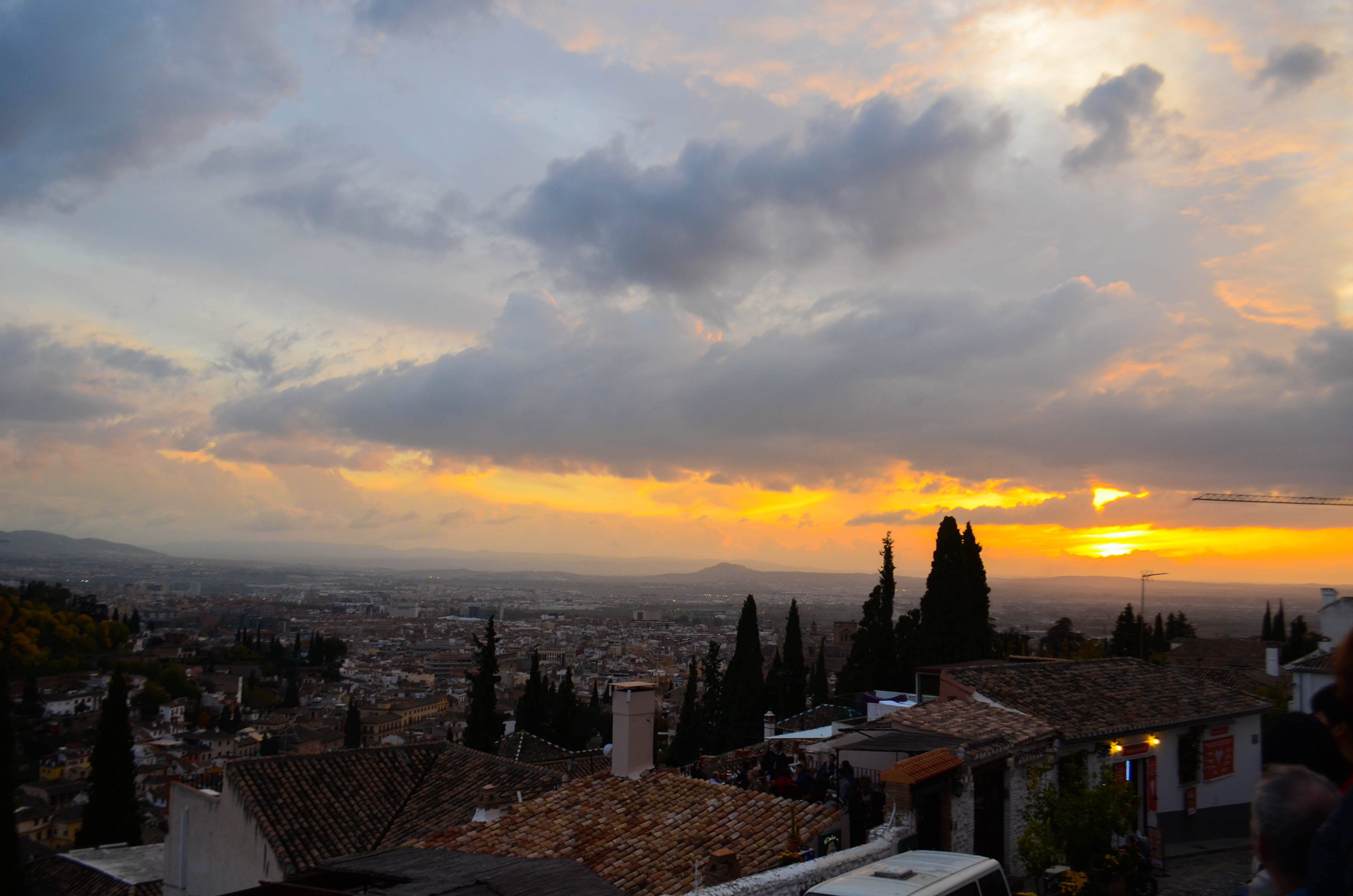
The view of Granada from the Mirador San Nicolas.
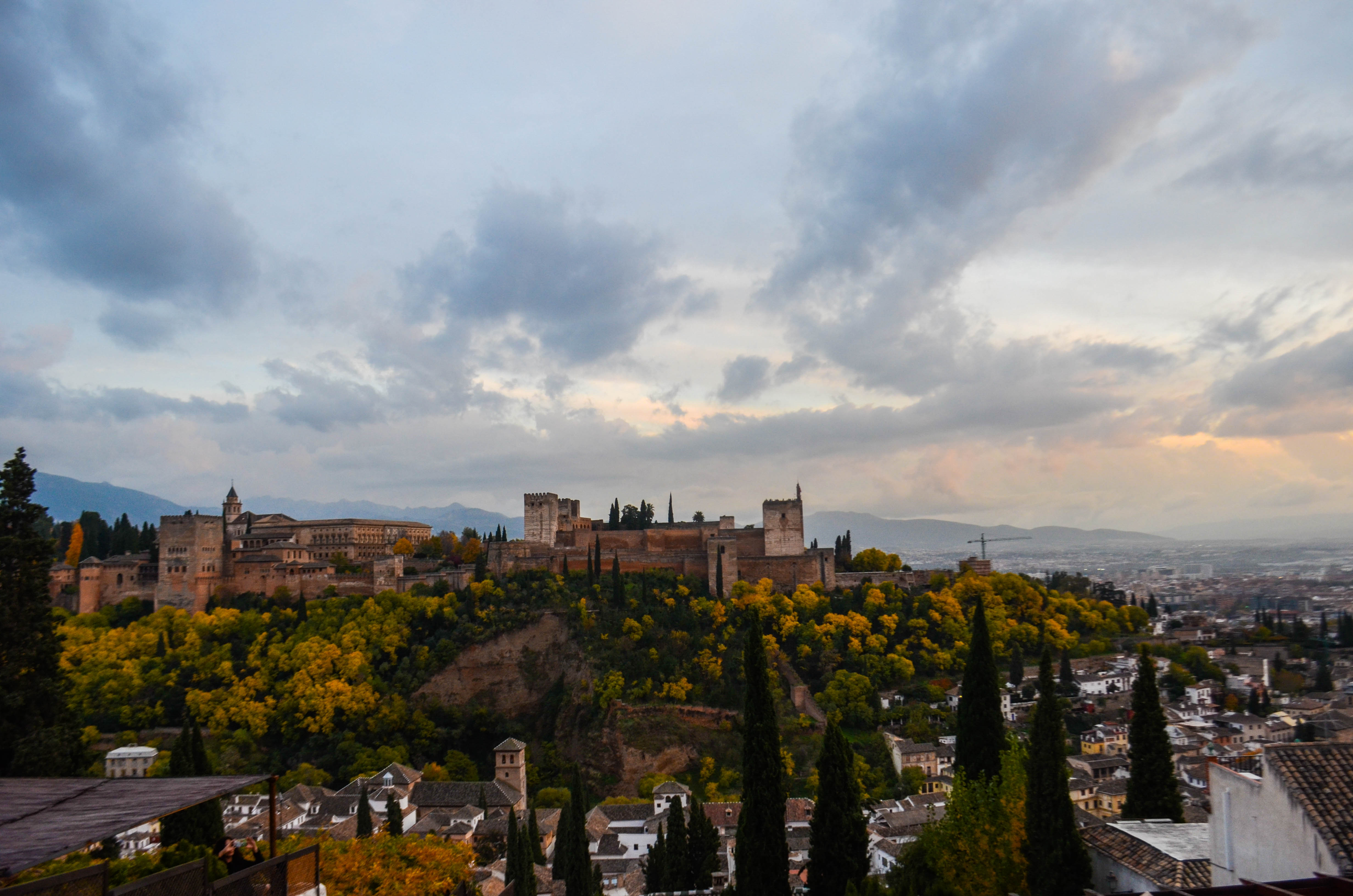
The view of the Alhambra from the Mirador San Nicolas.
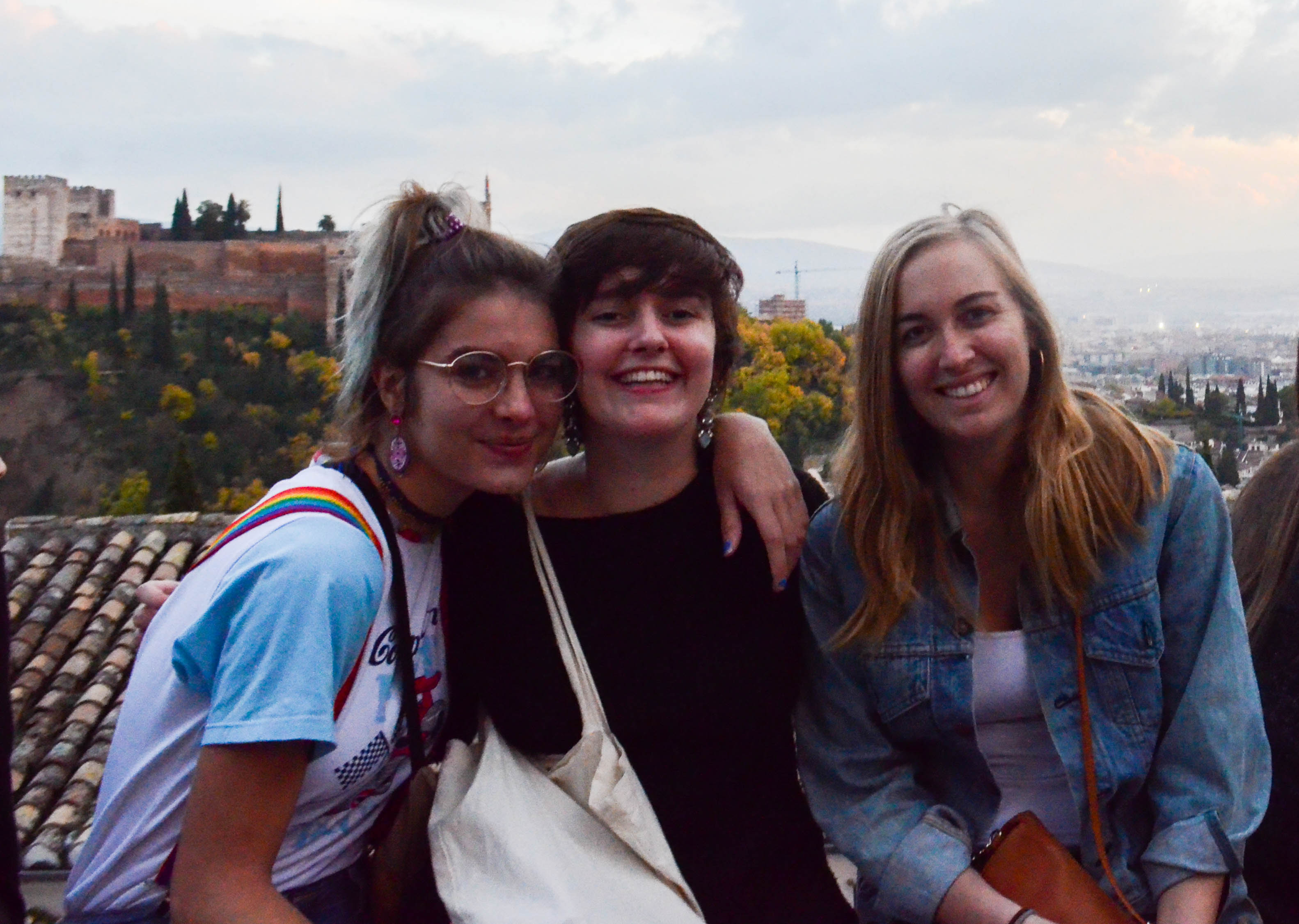
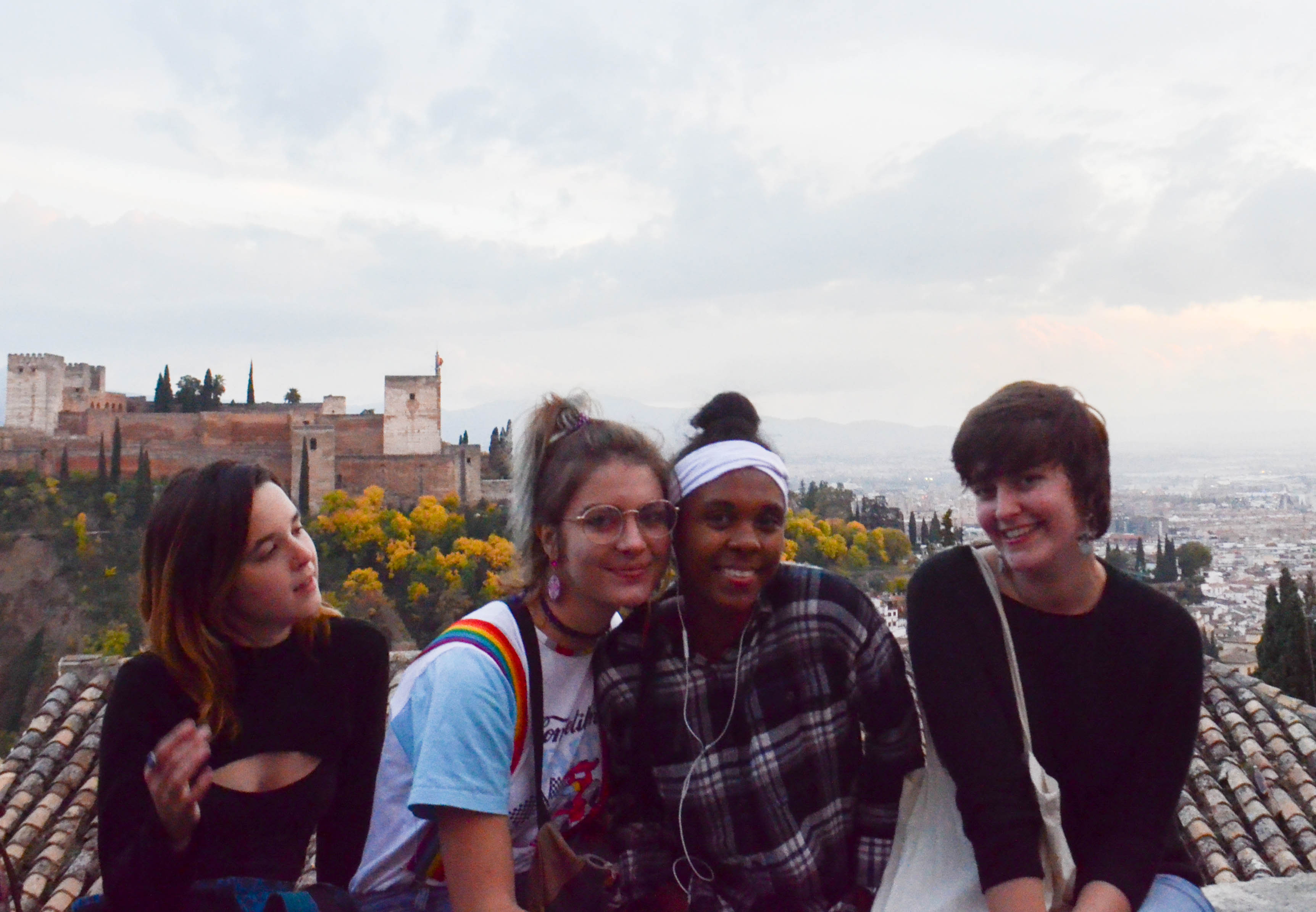

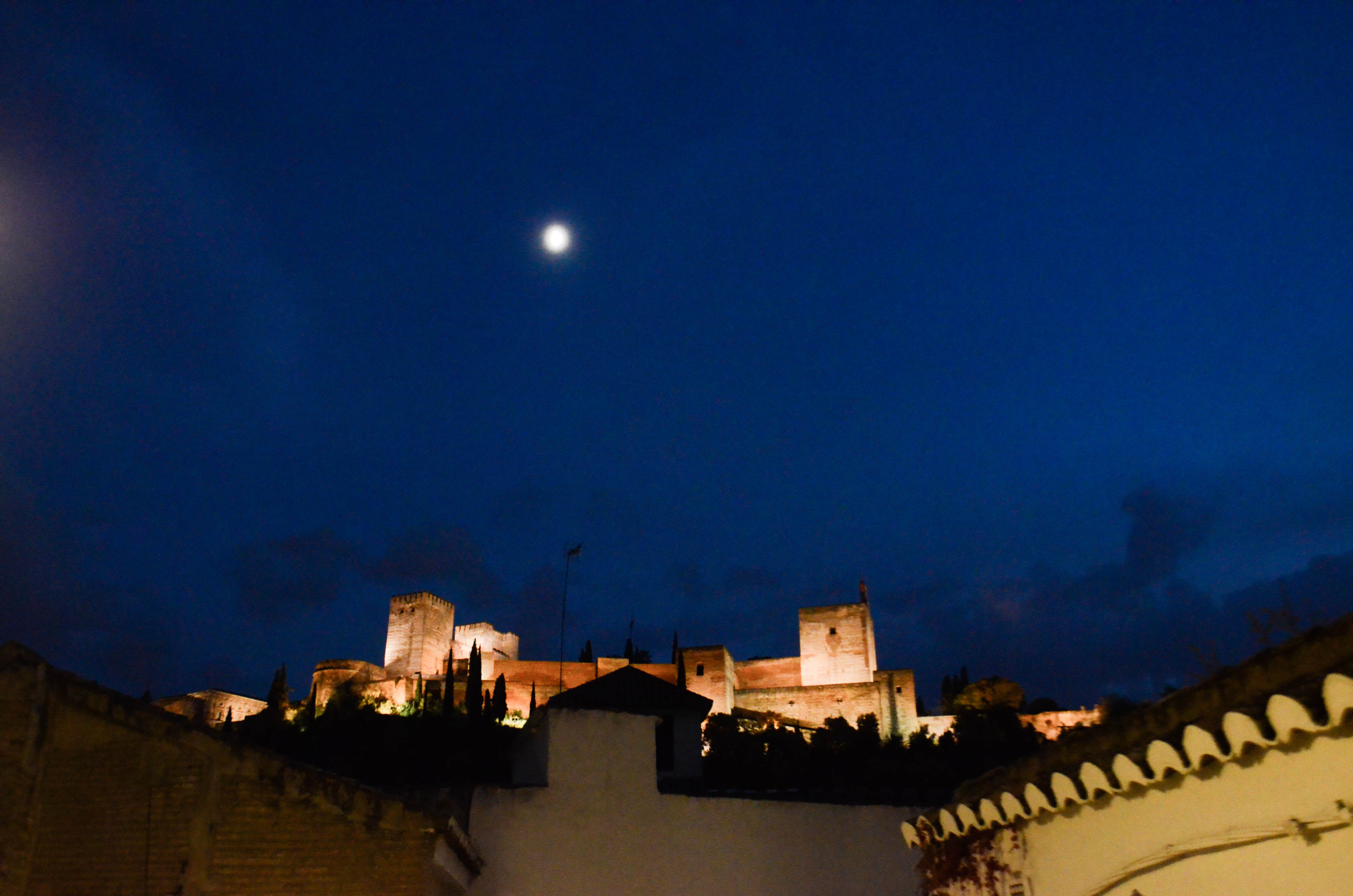
A view of the Alhambra at night on the walk back to the hostel from the Mirador San Nicolas.
After walking back from the lookout, we grabbed dinner as a group and then all went out to a Tetería, or tea house. These tea houses are littered all over the city, and boast dozens of varieties of teas and hookah for people to partake in in a setting that is distinctly Middle Eastern. Imagine vast cushions and vibrant wall hangings, coupled with Middle Eastern music. We were given our own room, and we had a blast. We all had tea, and my classmates and professors alike smoked hookah together. I didn’t have any hookah because, well, my lungs already suck, but we all danced and enjoyed ourselves.

One of my professors dancing in the tea house.
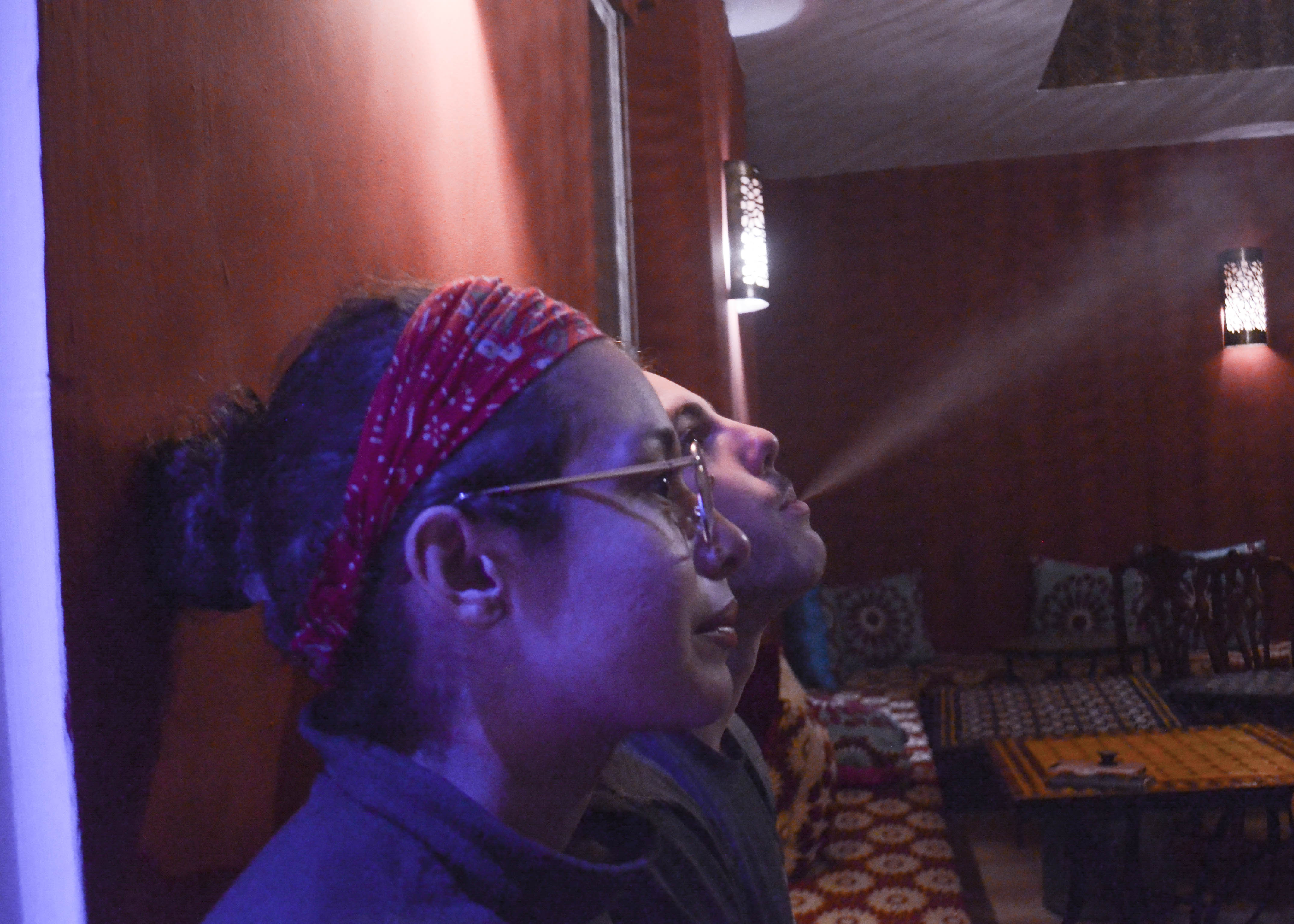
My classmates in the tea house.
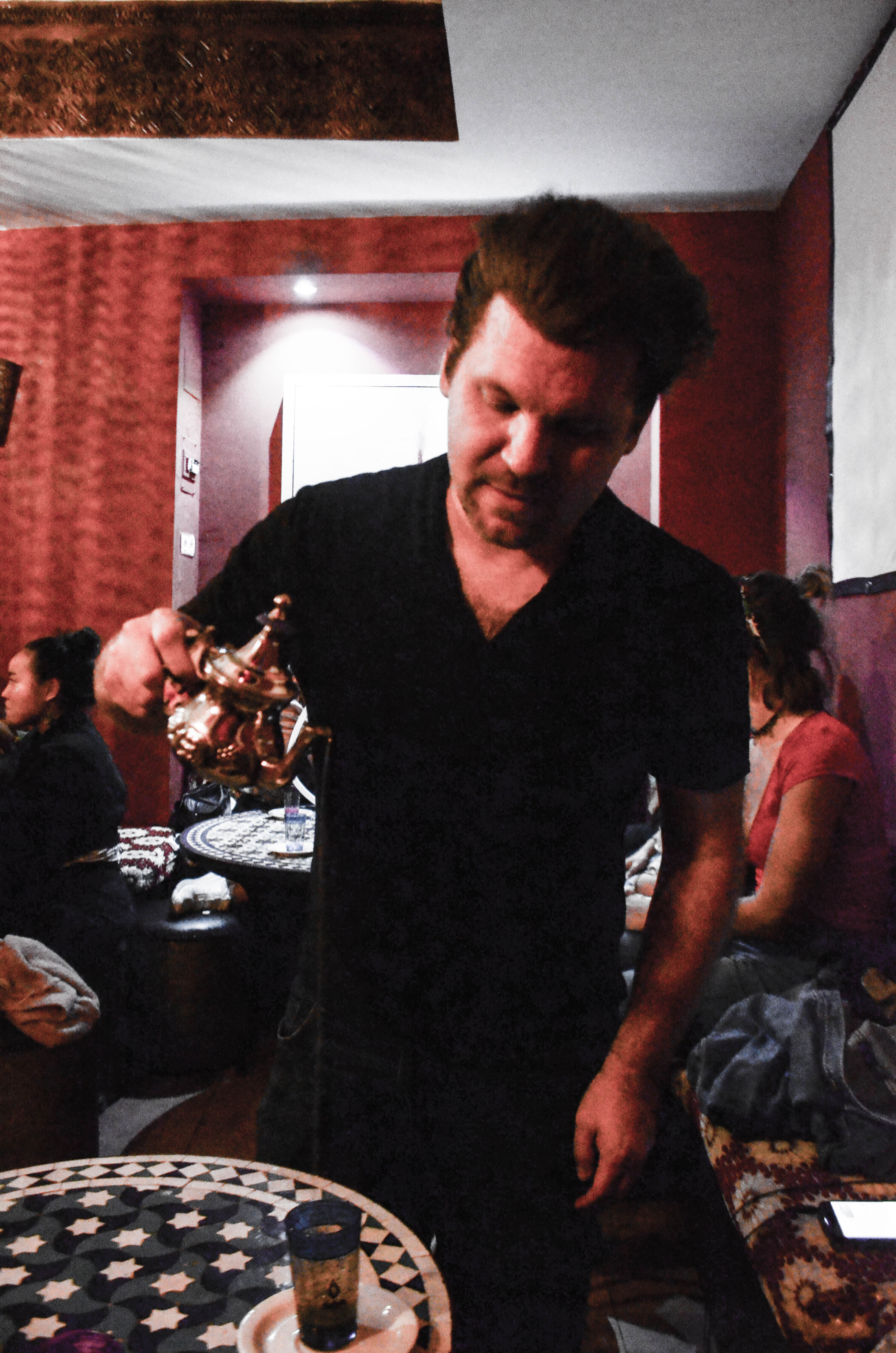
My program director demonstrating how to pour tea as he learned in Turkey.
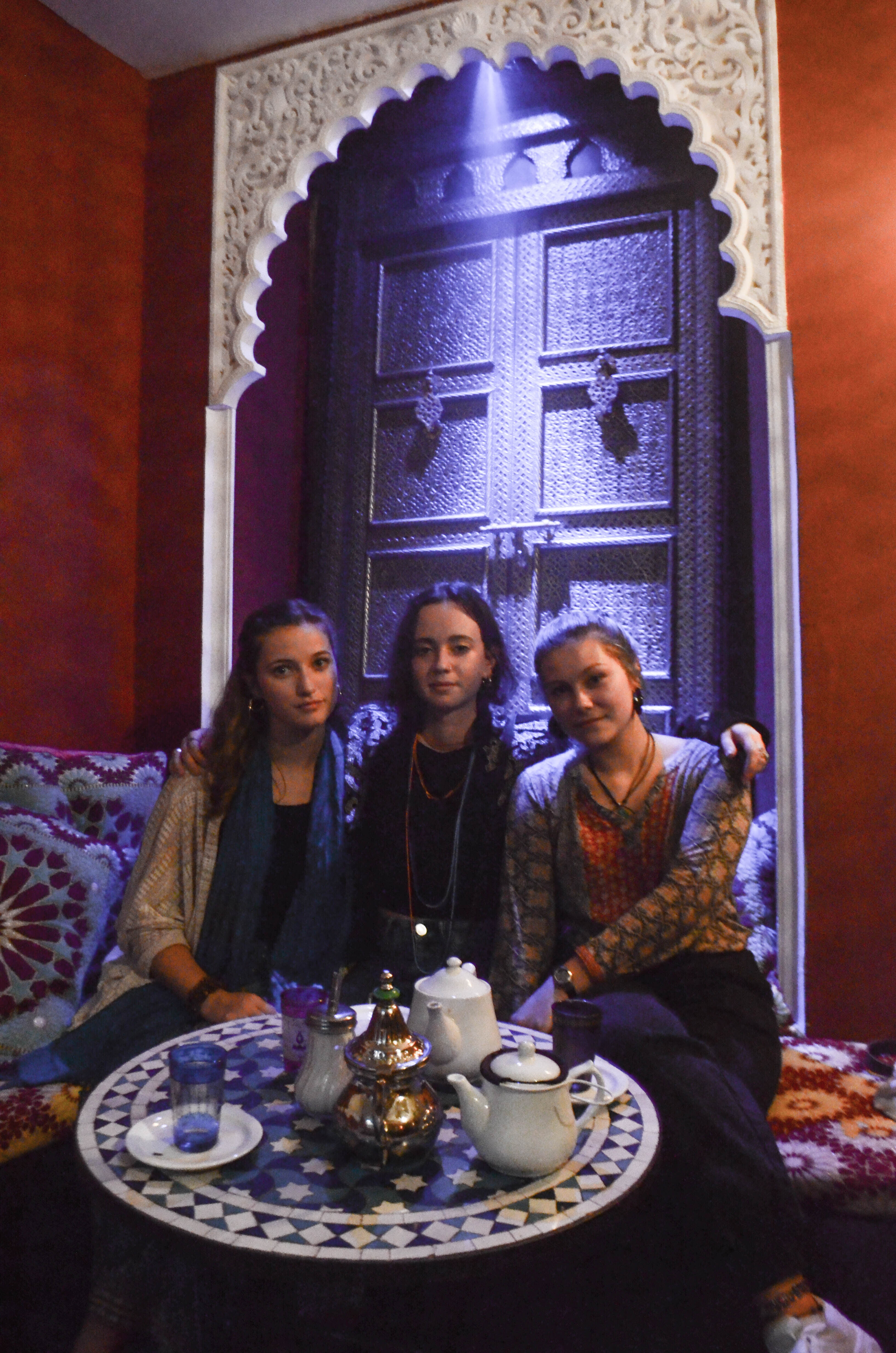
My classmates in the teahouse.
The next morning, we had a 3 hour tour of the famous Alhambra. This massive fortress and palace was built by the Muslim rulers of Al-Andalus, the Muslim empire of Spain that ruled for centuries before its fall in the year 1492. Construction of the Alhambra started in 889 AD and was completed in 1333. Alhambra means “the red palace,” and the structure is one that I believe that people need to see at least once in their lifetime. It’s incredibly. Truly incredible.
The Alhambra is huge, and the most beautiful parts of the buildings are the intricate carvings of Arabic script and the views of the changing leaves throughout the city below.
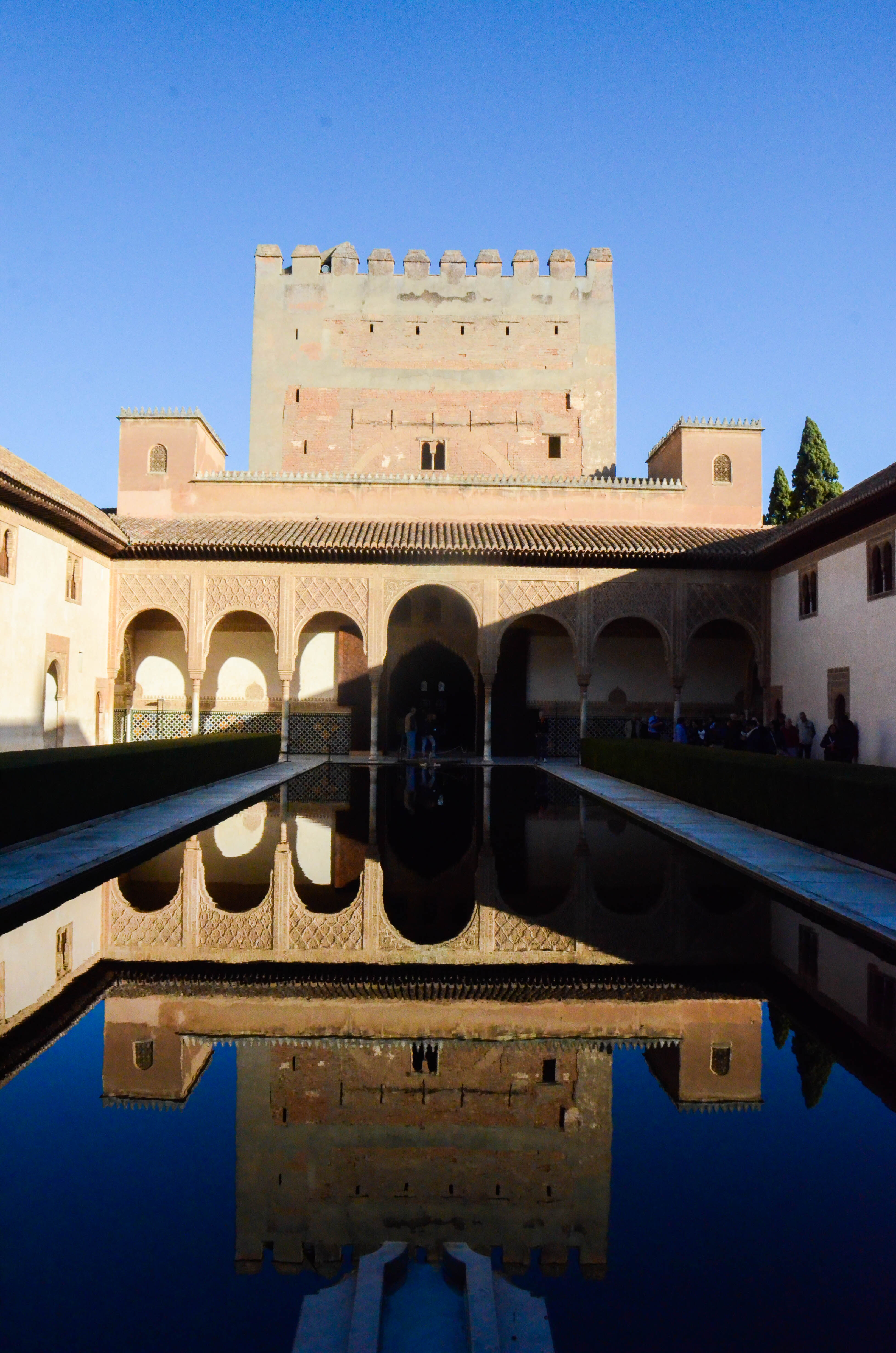
- Arabic script in the Alhambra.
- Kendall in front of Arabic script in the Alhambra.
- Arabic script in the Alhambra.
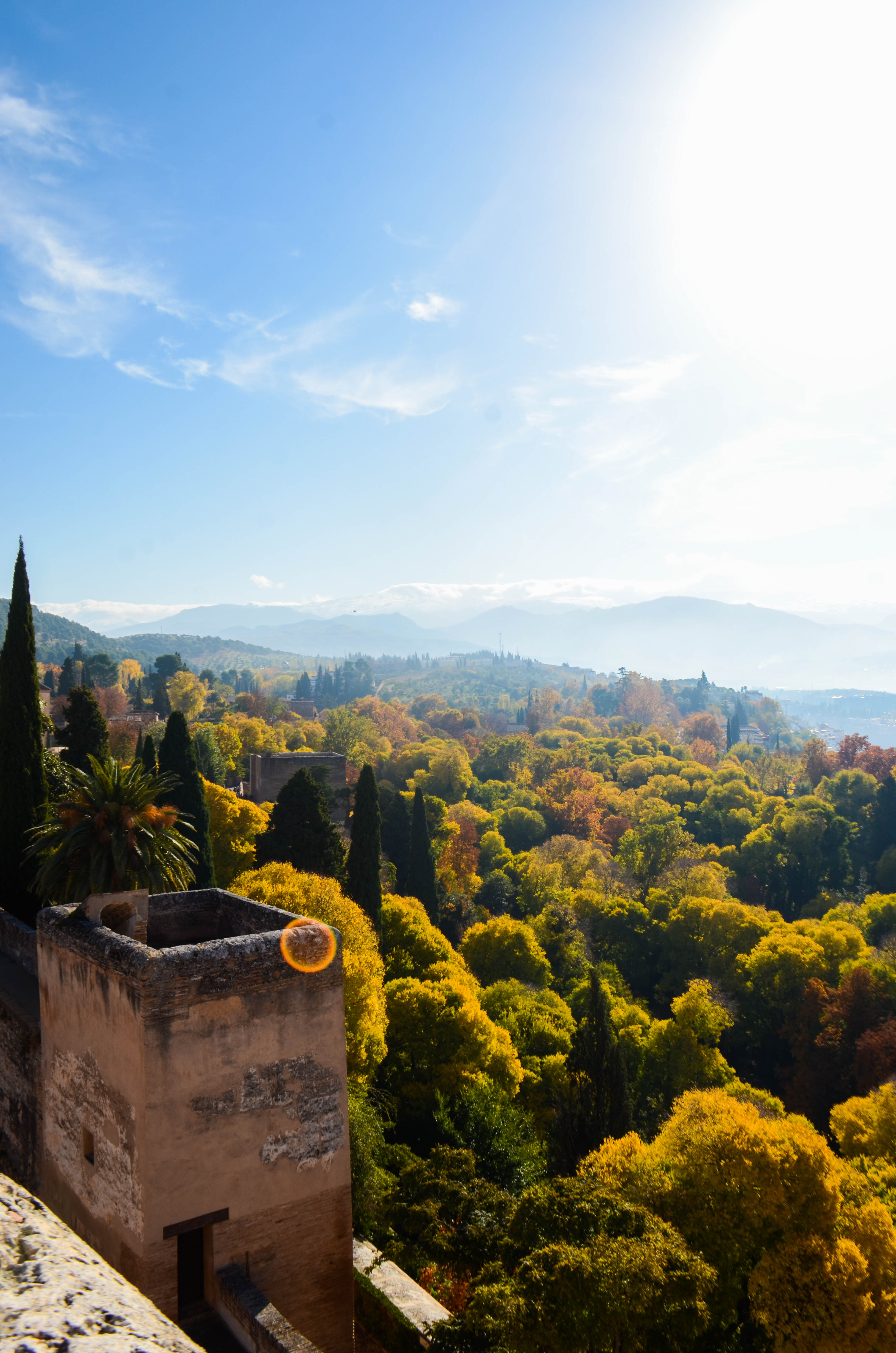
A view of the changing fall leaves from the Alhambra.
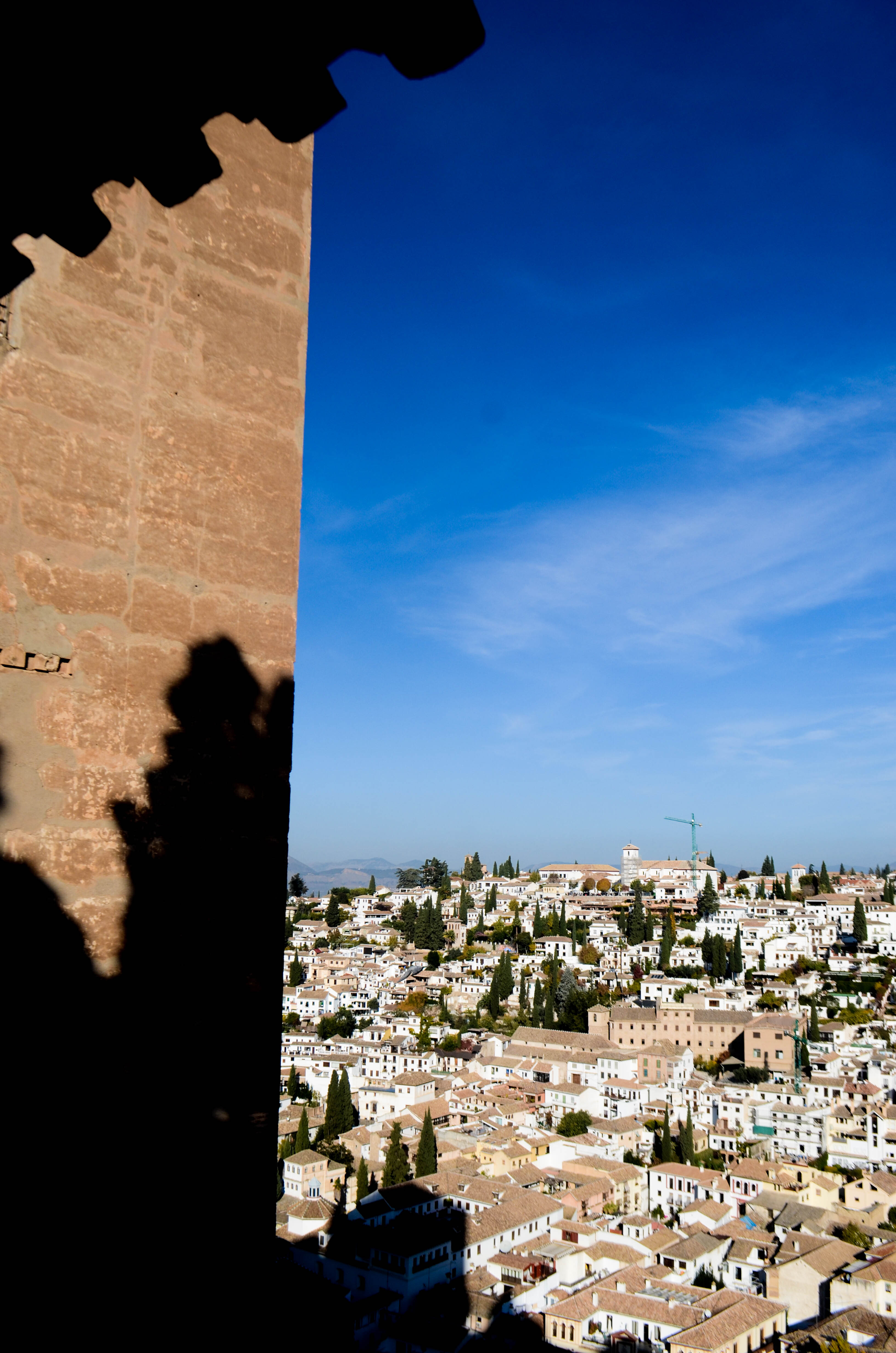
A view of the city from the Alhambra.
The tour was long – 3 hours is a bit longer than my attention span allows, and the fact that it was in Spanish made it a bit more difficult to concentrate, but it was extremely comprehensive and allowed us to better understand the fortress and the details specifically included in it. I wish we had longer than a day in Granada, but the time we did have allowed us to hit what was important – beautiful views, tea houses, and the Alhambra.
Cordoba
Our final stop was Cordoba, where we were able to cram quite a bit into just a few short hours. We arrived in Cordoba around 8 pm on Saturday night after 3 hours on a bus and a train, and basically just had dinner and went to the hostel before collapsing from exhaustion for the night. The next morning, we set off in the pouring rain for the Mezquita.
Mezquita translates directly to ‘mosque,’ but it is so much more than that. In this very spot was first the Visigoth Basilica of San Vicente built in the 6th century. Then, in 784, Abd al-Rahman I ordered the construction of the Great Mosque, which was expanded over the years by other Muslim rulers. It operated as a mosque for centuries until the Spanish reconquista, after which a cathedral was built right smack in the center of the mosque.
This mix of religions and cultures makes for an interesting, if not odd building. Fortunately, Christian rulers left the primary structures and designs of the mosque intact, and only added the cathedral in the middle and Christian imagery around the structure. This is fortunate because the mosque part of the structure is exceptionally beautiful. Not to say that the cathedral isn’t nice, but the horseshoe arcs throughout the Mezquita and the Mihrab, or door facing Mecca, are beautiful and iconic.
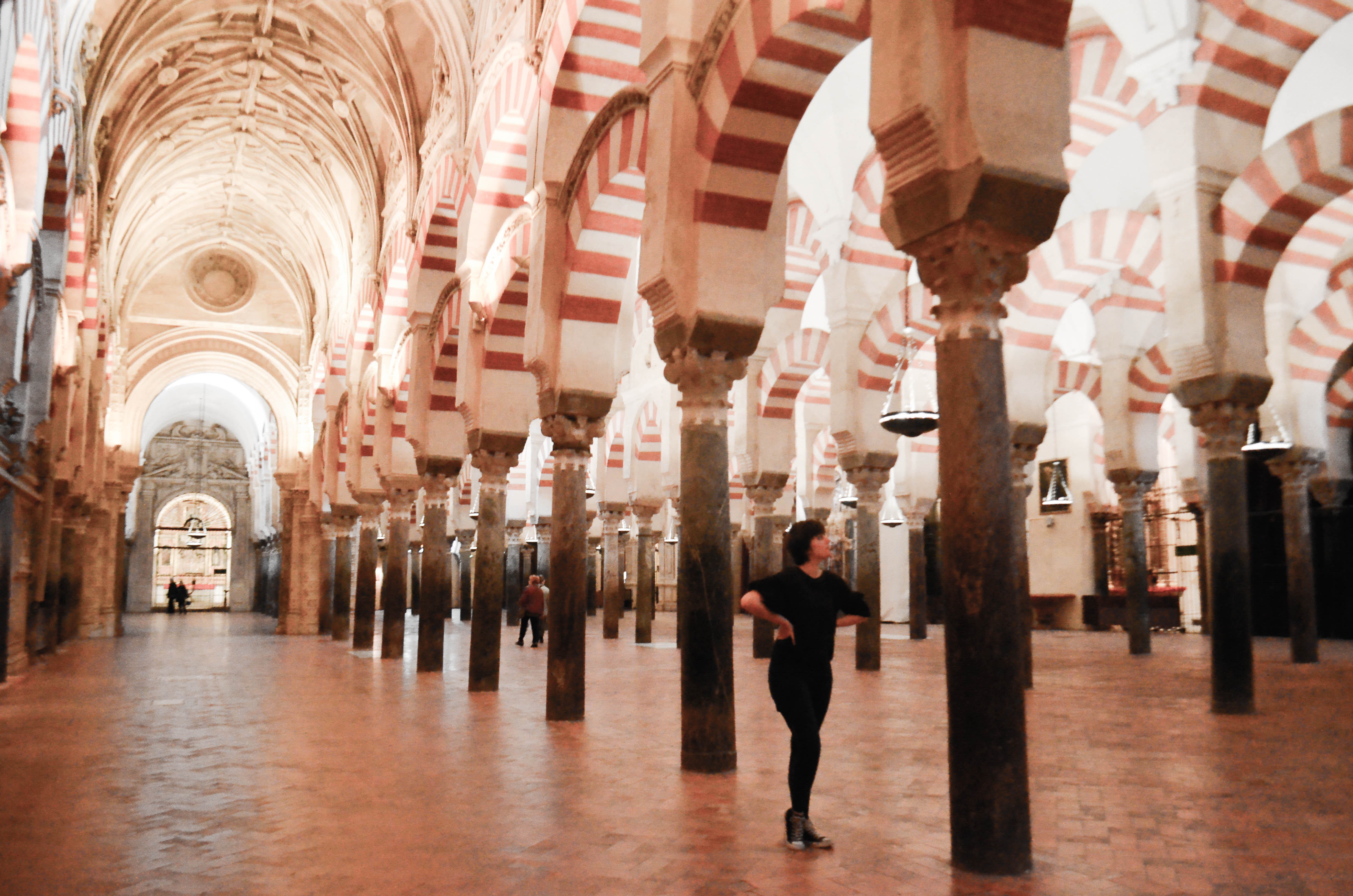
Standing under the iconic horseshoe arches of the Mezquita of Cordoba.
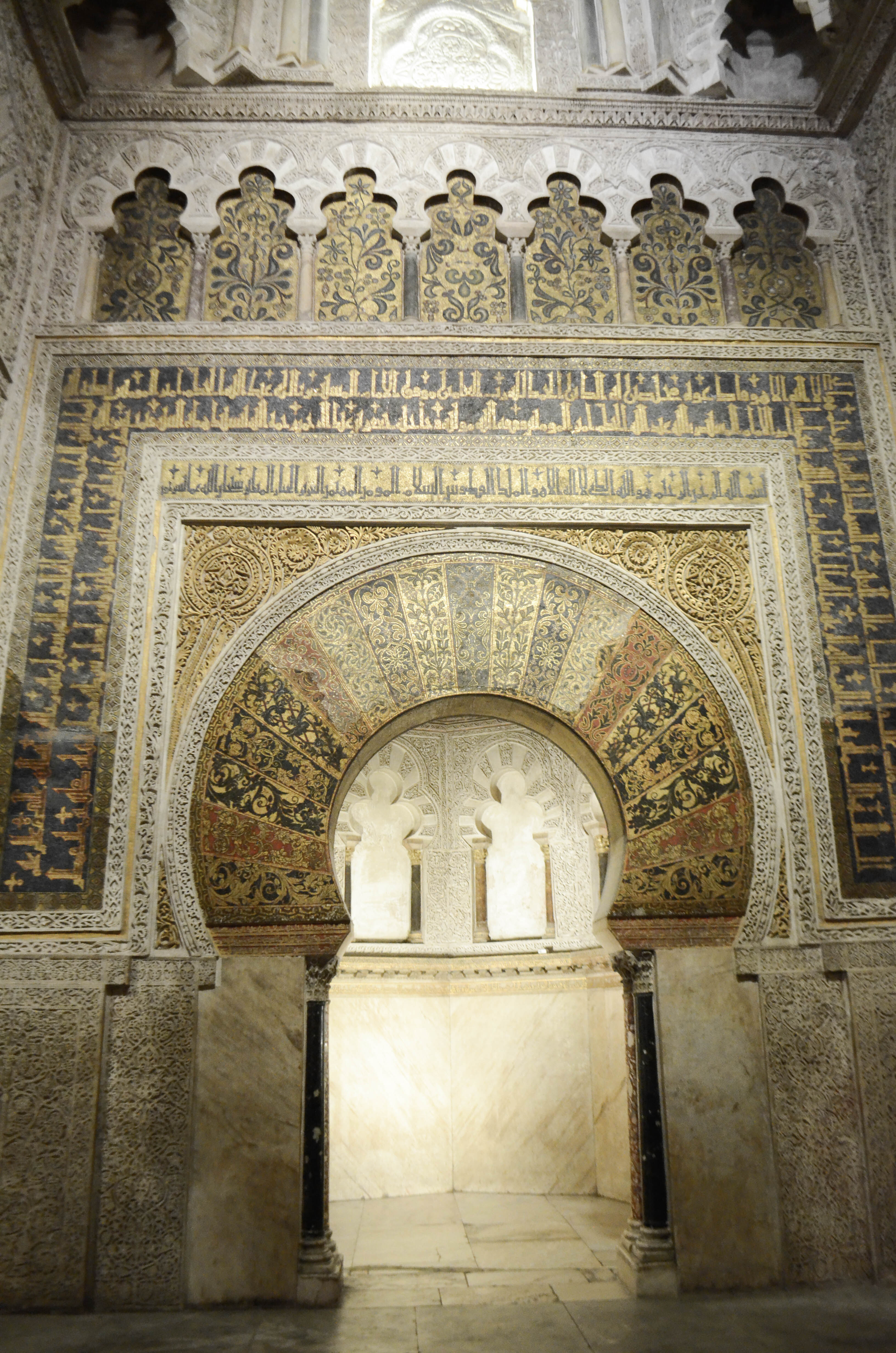
The Mihrab of the Mezquita in Cordoba.
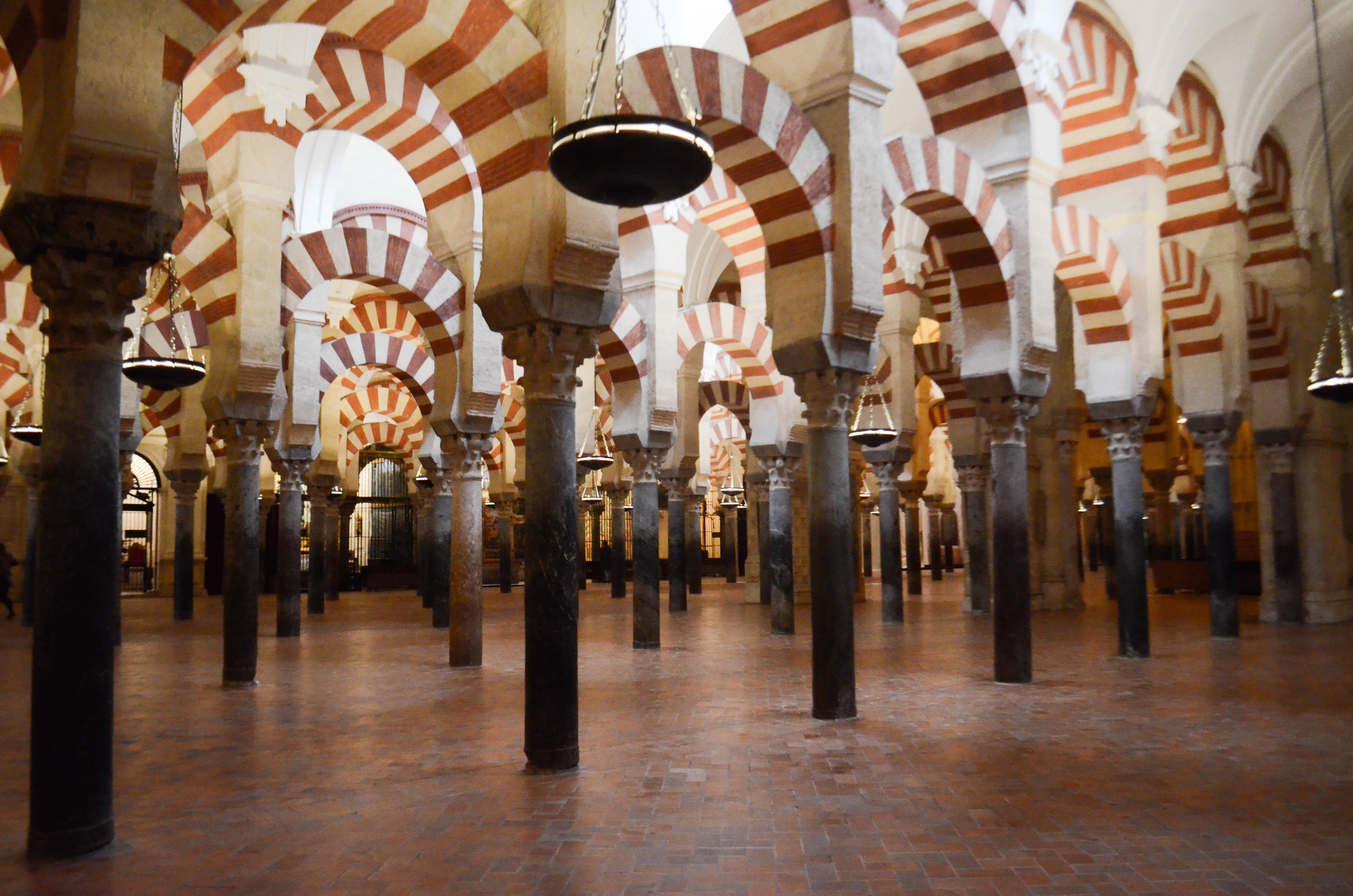
The horseshoe arches in the Mezquita of Cordoba.
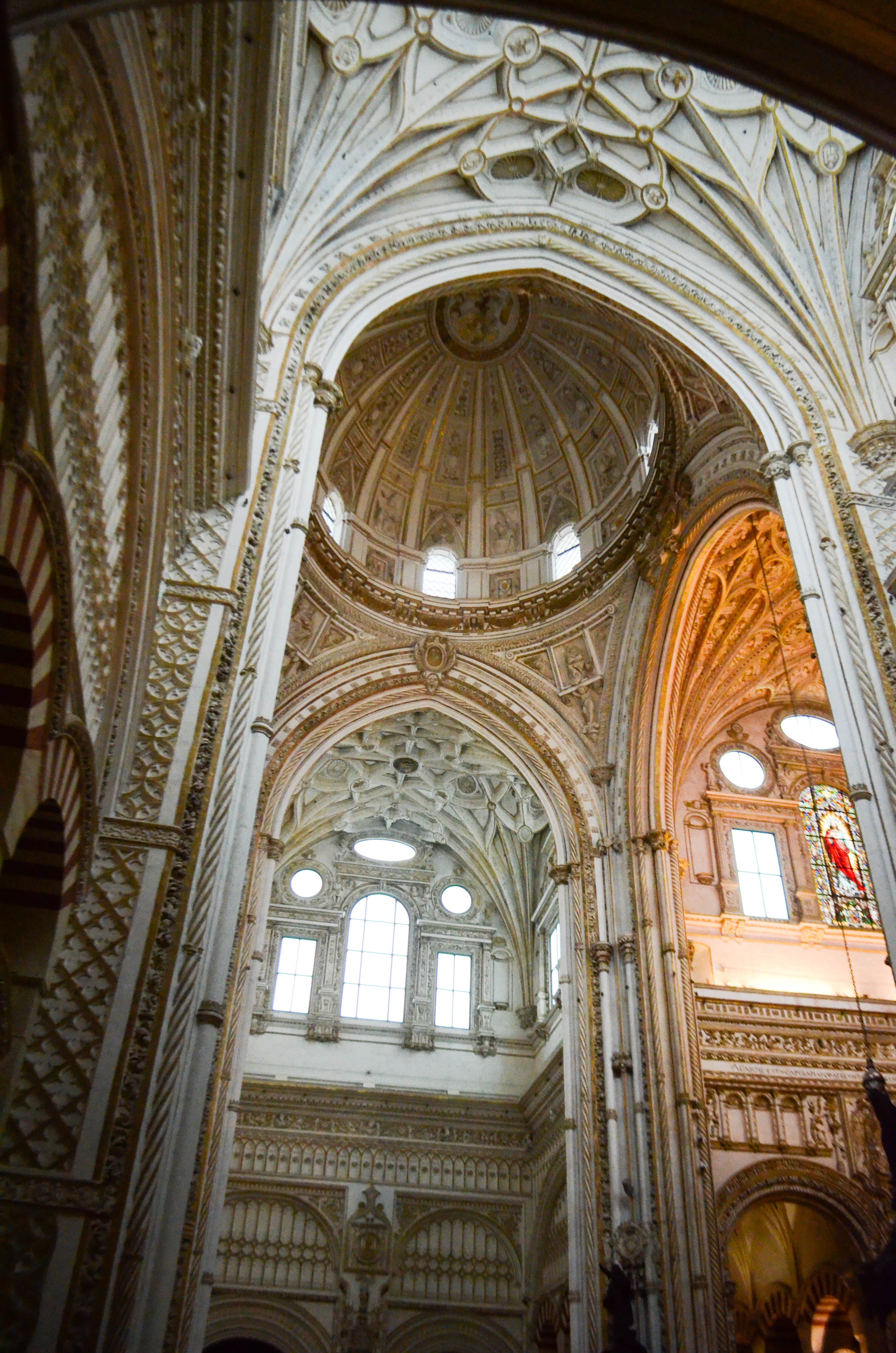
The dome in the cathedral section of the Mezquita.
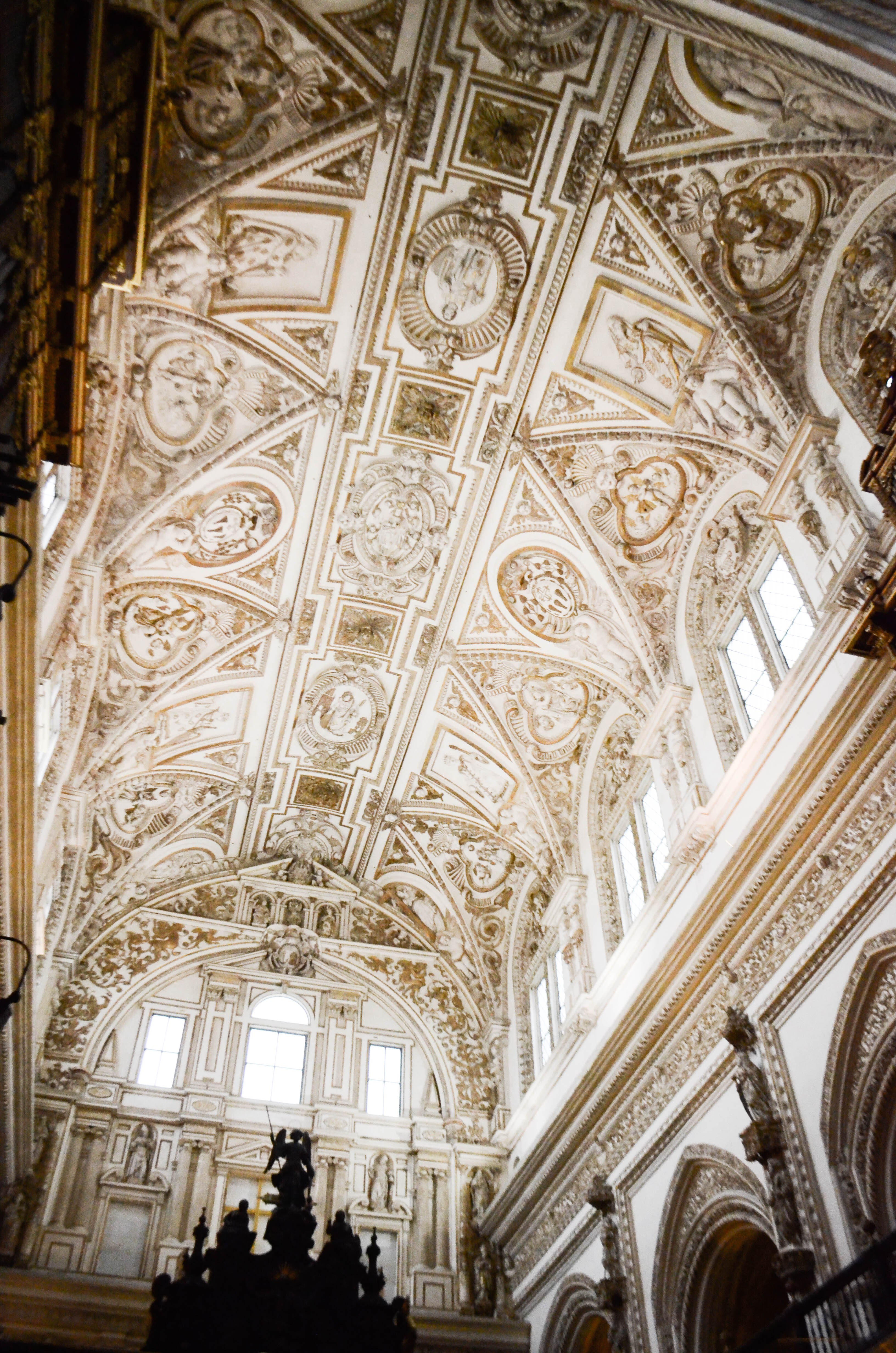
The ceiling of the cathedral section of Cordoba.
We visited the site to study the mix of cultures and religion, along with studying the influence of space and how it is fought over. This space went from church to mosque to church, and it now officially called the Mezquita-Catedral de Cordoba. However, a lot of the materials in the Mezquita-Catedral only have the word Cathedral written on them. Additionally, it is acceptable for Christians to pray in the cathedral, but against the rules for Muslims to pray in the Mezquita. This is unsurprising in a country that for centuries has prided itself of Catholicism and brutally treated others that believe in anything different, but it is still odd to witness such a blatant expression of these feelings.
After observing the interplay of Islam and Christianity at the Mezquita, we went to a synagogue and the Casa de Sefarad to see what role Judaism played and plays now in Cordoba. In the synagogue, we learned about aspects of Sefardic (of the Iberian Peninsula) Judaism present in the space. Then, at the Casea de Sefarad, a museum of Jewish history and culture, we listened to staff teach about the roles of Jews in Spain through song and imagery. The songs were soulfully beautiful, and this combined with the images and artifacts in the museum gave us a comprehensive idea of Judaism in Spain up until their expulsion in 1492, and how the religion presents itself today.
In just a few short hours in Cordoba, we managed to learn a great deal about the influence of the world’s three main religions in Cordoba and Southern Spain.
These 3 cities are some of my favorite places that I have visited both in Spain and Europe, and our trip through the 3 cities in 5 days is do-able, though I’d recommend that people spend a week or more traveling through Andalusia to get a deeper sense of these cities and the culture. They are amazing, and I cannot be more grateful for trips like this with Global.

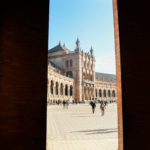
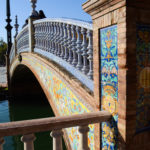

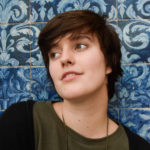
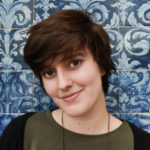
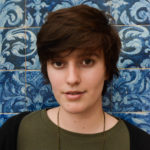
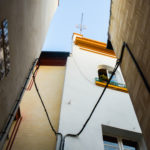
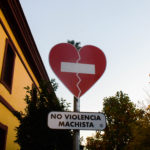

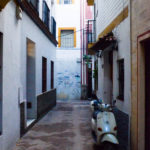
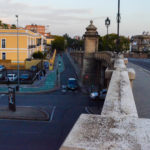
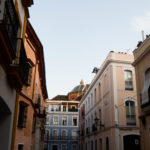
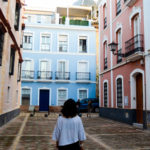
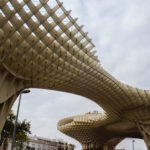
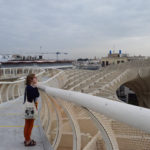
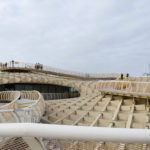
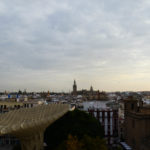
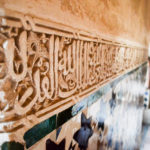
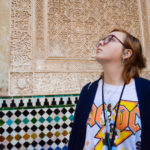
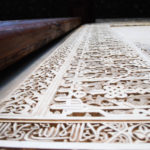
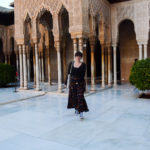
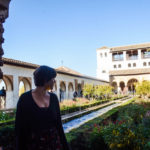
Great summary of what must be a fantastic area of Spain. Your commentary is, as usual, very enlightening. Thanks you.
Thank you so much for the history lesson, very interesting and beautiful-the pictures were fabulous. What a wonderful trip!!